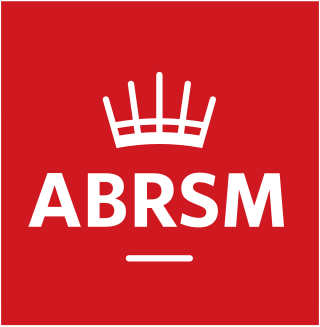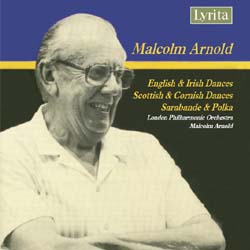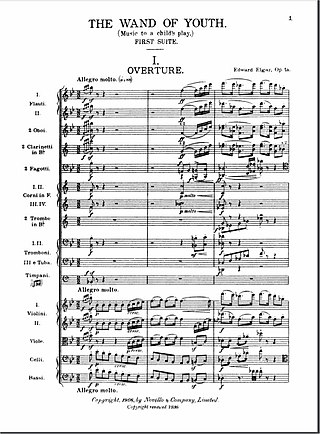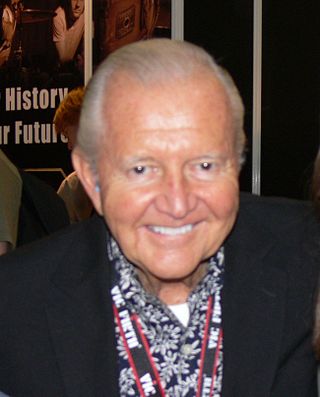Ian Wright was born in Aberdeen, United Kingdom. He studied mathematics at the University of Aberdeen before embarking on a career in music. His main interest outside music is travelling, especially when it involves walking and cycling. [1]
Ian Wright was born in Aberdeen, United Kingdom. He studied mathematics at the University of Aberdeen before embarking on a career in music. His main interest outside music is travelling, especially when it involves walking and cycling. [1]
Wright was made a fellow of the Royal Northern College of Music in 1988. He was involved in the preparation of the first percussion syllabus for the Associated Board of the Royal Schools of Music (ABRSM), a task which included writing the pieces for the four timpani books and some of the snare drum pieces for the examinations. He is presently a diploma examiner for the ABRSM. Since 1973, Wright has coached the percussion section of the National Youth Orchestra of Great Britain, of which he had at one time been a member for six years. [2]

A percussion instrument is a musical instrument that is sounded by being struck or scraped by a beater including attached or enclosed beaters or rattles struck, scraped or rubbed by hand or struck against another similar instrument. Excluding zoomusicological instruments and the human voice, the percussion family is believed to include the oldest musical instruments. In spite of being a very common term to designate instruments, and to relate them to their players, the percussionists, percussion is not a systematic classificatory category of instruments, as described by the scientific field of organology. It is shown below that percussion instruments may belong to the organological classes of ideophone, membranophone, aerophone and cordophone.

Timpani or kettledrums are musical instruments in the percussion family. A type of drum categorised as a hemispherical drum, they consist of a membrane called a head stretched over a large bowl traditionally made of copper. Thus timpani are an example of kettle drums, also known as vessel drums and semispherical drums, whose body is similar to a section of a sphere whose cut conforms the head. Most modern timpani are pedal timpani and can be tuned quickly and accurately to specific pitches by skilled players through the use of a movable foot-pedal. They are played by striking the head with a specialized drum stick called a timpani stick or timpani mallet. Timpani evolved from military drums to become a staple of the classical orchestra by the last third of the 18th century. Today, they are used in many types of ensembles, including concert bands, marching bands, orchestras, and even in some rock bands.

The ABRSM is an examination board and registered charity based in the United Kingdom. ABRSM is one of five examination boards accredited by Ofqual to award graded exams and diploma qualifications in music within the UK's National Qualifications Framework. 'The Associated Board of the Royal Schools of Music' was established in 1889 and rebranded as ABRSM in 2009. The clarifying strapline "the exam board of the Royal Schools of Music" was introduced in 2012.

The Sonata for Two Pianos and Percussion, Sz. 110, BB 115, is a musical piece written by Hungarian composer Béla Bartók in 1937. The sonata was premiered by Bartók and his second wife, Ditta Pásztory-Bartók, with the percussionists Fritz Schiesser and Philipp Rühlig at the International Society for Contemporary Music (ISCM) anniversary concert of 16 January 1938 in Basel, Switzerland, where it received enthusiastic reviews. Bartók and his wife also played the piano parts for the American premiere which took place in New York City's Town Hall in 1940, with the percussionists Saul Goodman and Henry Deneke. It has since become one of Bartók's most performed works.
The Young Person's Guide to the Orchestra, Op. 34, is a 1945 musical composition by Benjamin Britten with a subtitle Variations and Fugue on a Theme of Purcell. It was based on the second movement, "Rondeau", of the Abdelazer suite. It was originally commissioned for the British educational documentary film called Instruments of the Orchestra released on 29 November 1946, directed by Muir Mathieson and featuring the London Symphony Orchestra conducted by Malcolm Sargent; Sargent also conducted the concert première on 15 October 1946 with the Liverpool Philharmonic in the Philharmonic Hall, Liverpool, England.

English Dances, Op. 27 and 33, are two sets of light music pieces, composed for orchestra by Malcolm Arnold in 1950 and 1951. Each set consists of four dances inspired by, although not based upon, country folk tunes and dances. Each movement is denoted by the tempo marking, as the individual movements are untitled.
Orchestral percussion refers to the various percussion instruments used in an orchestral setting. It may also refer to the act of playing such instruments in an orchestral style. Many music schools and conservatories offer training for musicians interested in developing their skills as orchestral percussionists. Typically, an orchestral percussionist does not specialize in one particular instrument. Although there is no exhaustive list of all instruments that an orchestral percussionist must be able to play, there are particular instruments that are frequently used in the orchestral repertoire. This includes timpani, snare drum, bass drum, xylophone, glockenspiel, triangle, and tambourine.
Kevin Hathway is an English percussionist and educator. Besides being a member of the Philharmonia Orchestra, a position he has held since 1979, he is head of wind, brass and percussion at the Purcell School. He is a diploma examiner for the Associated Board of the Royal Schools of Music and co-devised their timpani, snare drum and tuned percussion examination syllabus.
The Virginia Band and Orchestra Directors Association is an organization of high school, middle school, and elementary school band and orchestra directors within the Commonwealth of Virginia, whose mission is to help promote opportunities of music education to K-12 students. Many of the events that the VBODA organizes schools from around Virginia to compete with each other, and to give outstanding individual student musicians a chance to work with renowned conductors around the United States. The VBODA is the primary arbiter for various band and orchestra events throughout the Commonwealth of Virginia.
Mitchell Thomas Peters was a principal timpanist and percussionist with the Los Angeles Philharmonic Orchestra. He composed well-known pieces for the marimba such as "Yellow After the Rain" and "Sea Refractions"; it is said that these works were composed because Peters felt that there was a lack of musically interesting material that would introduce his students to four-mallet marimba techniques.

The Wand of Youth Suites No. 1 and No. 2 are works for full orchestra by the English composer Edward Elgar. The titles given them by Elgar were, in full: The Wand of Youth First Suite, Op. 1a (1869–1907) and The Wand of Youth Second Suite,.
George Lawrence Stone (1886–1967) was an American drummer and author.

Everett Joseph "Vic" Firth was an American musician and the founder of Vic Firth Company, a company that makes percussion sticks and mallets.

Antonio Buonomo is an Italian composer, solo percussionist and music educator.
Professor of percussion at the conservatories of "S.Pietro a Majella in Naples" of Naples and "S.Cecilia" of Rome, Antonio Buonomo's professional experience includes performing as timpani soloist in various orchestras and director of one of Europe's first all-percussion instrument groups.
His many compositions and transcriptions for percussion instruments have been published by the main houses of this sector and include teaching materials as well as music for plays and television documentaries. They have been performed for the occasion of prestigious avant-garde musical events, television and radio programs as well as in public concerts.
Symphony No. 10 is the tenth symphony by the American composer Philip Glass. The work was commissioned by the Orchestre Français des Jeunes and premiered August 9, 2012, with Dennis Russell Davies conducting the Orchestre Français des Jeunes at the Grand Théâtre de Provence in Aix-en-Provence. The piece had its United Kingdom premiere July 31, 2013 at The Proms in Royal Albert Hall.

Stephen Goss is a Welsh composer, guitarist and academic. His compositional output includes orchestral and choral works, chamber music, and solo pieces. His music draws freely on a number of styles and genres. He is particularly known for his guitar music, which is widely performed and recorded.
Jonathan Haas is an American timpanist. Philip Glass' Concerto Fantasy for Two Timpanists and Orchestra was commissioned for him by several orchestras.
Tatsuo Sasaki is a timpanist, percussionist, xylophonist and marimbist. He became a naturalized American citizen and lives in San Diego, California.
Morris Goldenberg was an American percussionist, music teacher, and method book author. He wrote several books on orchestral snare drumming, mallet percussion, and timpani. He is a member of the Percussive Arts Society Hall of Fame.
Carl E. Gardner was an American percussionist, drum maker, and method book author.